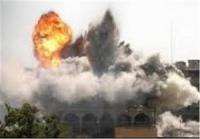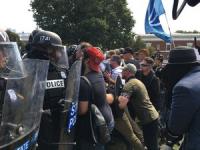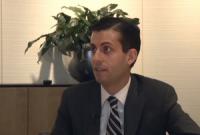-
Turkey’s foray into Somalia is a huge success, but there are risks
Turkey’s engagement with Somalia is striking for its brevity and ostensible success. Turkey has been involved in Somalia since just 2011, yet Ankara can point to a string of reported accomplishments and an arguably outsized presence in an often violent country regularly described as a failed state. Turkey’s presence in Somalia certainly embodies one of the most interesting regional geopolitical developments in the past decade. It also represents one of the most misunderstood and confusing. Why did Turkey choose Somalia? And, after its initial humanitarian intervention in 2011, what internal and external forces have shaped and expanded that involvement? Furthermore, what explains Turkey’s reported triumphs? Turkey’s actions have arguably improved the situation in Somalia over the past six years. This is because Ankara has actually attempted to assuage rather than solve Somalia’s long-standing problems outright. Investment is largely driven by profits and assistance is targeted, coordinated and based on needs. These interventions rarely come with the types of strings attached that characterize other efforts seeking to restructure Somalia. This has been welcomed by many Somalis for whom requirements for political reform or the creation of accountability mechanisms ring hollow.
-
-
Alarming increase in white supremacist propaganda on U.S. college campuses
New data released Thursday by the Anti-Defamation League (ADL) shows an alarming increase in white supremacist propaganda on U.S. college campuses during the 2017 fall semester. Since 1 September 2016, ADL’s Center on Extremism has recorded 346 incidents where white supremacists have used fliers, stickers, banners, and posters to spread their message. These incidents targeted 216 college campuses — from Ivy League schools to local community colleges — in 44 states and Washington, D.C. During the fall semester of 2017 (1 September through 31 December), there were 147 such incidents, a staggering 258 percent increase over the 41 incidents that took place during the fall semester of 2016.
-
-
2017 anti-Semitic incidents in the U.K. on the rise
The Community Security Trust’s (CST) 2017 Anti-Semitic Incidents Report, published Thursday, shows that CST recorded 1,382 anti-Semitic incidents in the United Kingdom in 2017, the highest total CST has ever recorded for a calendar year. This is a 3 percent increase from the 1,346 incidents recorded during 2016, which was itself a record annual total. The previous record high was in 2014, when CST recorded 1,182 anti-Semitic incidents. A copy of the report can be downloaded here. In addition to the 1,382 anti-Semitic incidents, a further 872 reports of potential incidents were received by CST in 2017 but were not deemed to be anti-Semitic and are not included in this total. Many of these 872 potential incidents involved suspicious activity or possible hostile reconnaissance at Jewish locations; criminal activity affecting Jewish people and buildings; and anti-Israel activity that did not include anti-Semitic language, motivation or targeting.
-
-
IvySys Technologies awarded $4.6 million DARPA contract to combat Weapons of Mass Terror (WMT)
Reports of chemical weapons use around the world raises serious concerns about non-state actors’ access to weapons of mass terror (WMT) and reinforces fears of a possible terrorist attack with chemical, biological, radiological, or nuclear (CBRN) weapons in the West. Today’s terrorist networks move operatives, money and material across borders and through the crevices of the global economy, making tracking such adversaries a daunting challenge. In this new norm, the security of the United States will rely on novel, game-changing modeling techniques and solutions to curtail mass terror events.
-
-
ISIS bomb-making videos continue to be available on Google platforms
One of ISIS’s most notorious bomb-making videos is frequently and continually uploaded to Google web platforms, and there is little indication that the company is taking the appropriate steps to prevent these reuploads. “You Must Fight Them O Muwahhid” is one of ISIS’s most infamous videos, urging attacks in the West, displaying knife attack tactics on a live human target, and notably, providing instructions for building an explosive device with easily obtainable materials.
-
-
Number of Muslim-Americans involved in terrorism continues to drop in 2017: Report
The annual report from the Triangle Center on Terrorism and Homeland Security documents a continuing decline in the number of Muslim-Americans associated with violent extremism in 2017. The total for the first year of the Trump administration continued a downward trend which was visible in the final year of the Obama administration. Muslim-American extremists have caused 140 deaths in more than 16 years since September 11, 2001. Over the same period, there have been approximately 260,000 murders in the United States, and 267 lives were lost in mass shootings in 2017 alone (this figure does not include the victims of Muslim-American extremists). Since 2012, 78 Muslim-Americans have been identified as joining militants abroad, according to the report. More than half of these individuals have since been killed or detained.
-
-
Netanyahu tells Putin Israel won’t allow Iranian bases in Syria, missile plants in Lebanon
In talks with Russian President Vladimir Putin, Israeli Prime Minister Benjamin Netanyahu told Putin that Israel would not tolerate an Iranian military presence in Syria or making Lebanon into “factory for precision missiles” to attack Israel. Regarding Iranian efforts to establish a base of operations in Syria, Netanyahu said, “I made clear to Putin that we will stop it if it doesn’t stop by itself. We are already acting to stop it.”
-
-
Step-by-step horsepox study intensifies dual-use research debate
The publication last week of a research paper offering a manual for re-creating an orthopoxvirus has been harshly criticized by both scientists and biosecurity experts as reckless and dangerous. The research demonstrates the potential to recreate the virus that causes smallpox—one of the greatest scourges the world has ever faced and eradicated. “The risks posed by the publication of methods that could ease the pathway for synthesizing smallpox should have been carefully weighed from the outset,” says one expert. Analysts say that the publication further accentuates the need for urgent global dialogue to develop clear norms and actions for reducing biological risks posed by advances in technology. “As governmental oversight continues to lag behind biotechnology breakthroughs, academic and private stakeholders conducting, funding, and publishing research - as well as those developing new technologies – also must take responsibility for mitigating risk,” says the expert.
-
-
The synthesis of horsepox virus and the failure of dual-use research oversight
On 19 January 2018, the open access scientific journal PLOS One published an article that describes the de novo synthesis of horsepox virus, the first ever synthesis of a member of the orthopoxvirus family of viruses that includes the variola virus that causes smallpox. This research crosses a red line in the field of biosecurity. Given the high degree of homology between orthopoxviruses, the techniques described in this article are directly applicable to the recreation of variola virus. The synthesis of horsepox virus takes the world one step closer to the reemergence of smallpox as a threat to global health security. The reemergence of smallpox would be a global health disaster. Prior to its eradication, smallpox killed an estimated 300 million people, more people than all the wars of the twentieth century combined. Based on these considerations, the horsepox synthesis research is all risk and no reward. Given the known risks of this research for pioneering a technique that can be used to recreate variola virus and its questionable benefits, the publication of this article represents a failure of PLOS One to exercise its responsibility to carefully consider the biosecurity implications of the research it publishes.
-
-
Militant attacks caused fewer fatalities in 2017

In 2017, militants conducted 22,487 attacks worldwide, down 7.1 percent from 24,202 in 2016, according to the annual Jane’s Terrorism and Insurgency Center (JTIC) Global Attack Index released Thursday. The 2017 attack figure decreased only slightly compared to 2016, but the resultant 18,475 non-militant fatalities represented a much more significant 33 percent decrease year on year, and an even larger 45 percent decrease from the average fatality total over the preceding five years. More than 700 suicide attacks were conducted in 2017, causing almost 4,000 fatalities – a slight increase in attacks from 2016 but a more than one-third decline in fatalities. The upcoming World Cup in Russia in June likely presents a particularly attractive target for the Islamic State, given Russia’s role in the group’s territorial defeat in addition to the participation of the Saudi and Iranian national teams.
-
-
2018: Critical period of intensified risks
The Global Risks Report 2018, published this week by the World Economic Forum cautions that we are struggling to keep up with the accelerating pace of change. It highlights numerous areas in which we are pushing systems to the brink, from extinction-level rates of biodiversity loss to mounting concerns about the possibility of new wars. The reports says that the structural and interconnected nature of risks in 2018 threatens the very system on which societies, economies, and international relations are based – but that the positive economic outlook gives leaders the opportunity to tackle systemic fragility.
-
-
White supremacist murders more than doubled in 2017: ADL

The number of white supremacist murders in the United States more than doubled in 2017 compared to the previous year, far surpassing murders committed by domestic Islamic extremists and making 2017 the fifth deadliest year on record for extremist violence since 1970. In its annual assessment of extremist-related killings, the Anti-Defamation League’s Center on Extremism found white supremacists and other far-right extremists were responsible for 59 percent of all extremist-related fatalities in the United States in 2017, up dramatically from 20 percent in 2016.
-
-
New government terrorism report provides little useful information

The Departments of Homeland Security and Justice (DHS/DOJ) on Tuesday released a report on the threat of international terrorism. The new DHS/DOJ report produces little new information on immigration and terrorism and portrays some misleading and meaningless statistics as important findings. For example, since the beginning of 2002 through 2017, native-born Americans were responsible for 78 percent of all murders in terrorist attacks committed on U.S. soil while foreign-born terrorists only committed 22 percent. Including the actual number of deaths caused by terrorists flips the DHS/DOJ statistics on its head. Also: During 2002-2017, the chance of being murdered in a terrorist attack committed by a native-born American on U.S. soil was about one in 40.6 million per year. During the same period, the chance of being murdered by a foreign-born terrorist was about 145 million per year. The annual chance of being murdered in a non-terrorist homicide was about one in 19,325 per year, or about 1,641 times as great as being killed in any terrorist attack since 9/11.
-
-
Sahel region: New initiative to fight terrorism
Defense ministers from five countries in the Sahel region – the vast area immediately south of the Sahara Desert, extending from Senegal and Mauritania in the west to northern Ethiopia in the east – joined the French defense minister in a meeting in Paris in the latest push of joint antiterrorism force in the fragile region. “The joint force is gaining momentum… the first operation has taken place, the second one is starting today,” Malian Defense Minister Tiena Coulibaly told reporters.
-
-
Smart sensor could revolutionize crime, terrorism prevention
Crime, terrorism prevention, environmental monitoring, reusable electronics, medical diagnostics and food safety, are just a few of the far-reaching areas where a new chemical sensor could revolutionize progress. Engineers at the University of Oxford have used material compounds, known as Metal Organic Frameworks (MOFs), to develop technology that senses and responds to light and chemicals. The material visibly changes color depending on the substance detected.
-
- All
- Regional
- Water
- Biometrics
- Borders/Immig
- Business
- Cybersecurity
- Detection
- Disasters
- Government
- Infrastructure
- International
- Public health
- Public Safety
- Communication interoperabillity
- Emergency services
- Emergency medical services
- Fire
- First response
- IEDs
- Law Enforcement
- Law Enforcement Technology
- Military technology
- Nonlethal weapons
- Nuclear weapons
- Personal protection equipment
- Police
- Notification /alert systems
- Situational awareness
- Weapons systems
- Sci-Tech
- Sector Reports
- Surveillance
- Transportation
Advertising & Marketing: advertise@newswirepubs.com
Editorial: editor@newswirepubs.com
General: info@newswirepubs.com
2010-2011 © News Wire Publications, LLC News Wire Publications, LLC
220 Old Country Road | Suite 200 | Mineola | New York | 11501
Permissions and Policies
Editorial: editor@newswirepubs.com
General: info@newswirepubs.com
2010-2011 © News Wire Publications, LLC News Wire Publications, LLC
220 Old Country Road | Suite 200 | Mineola | New York | 11501
Permissions and Policies
